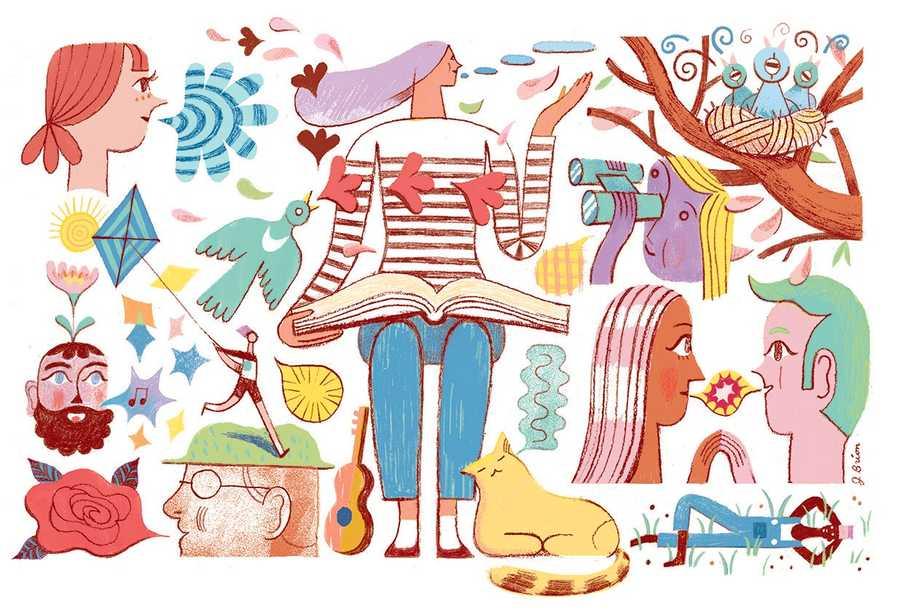The 'untranslatable' emotions you never knew you had
Curated from: bbc.com
Ideas, facts & insights covering these topics:
5 ideas
·2.41K reads
16
Explore the World's Best Ideas
Join today and uncover 100+ curated journeys from 50+ topics. Unlock access to our mobile app with extensive features.
The Positive Lexicography Project
It aims to offer a more nuanced understanding of ourselves, by capturing many ways of expressing good feelings from across the world.
It is directed by Tim Lomas at the University of East London, who is working towards getting many "untranslatable" experiences get in our daily vocabulary.
153
609 reads
Highly specific positive feelings
... that depend on particular circumstances:
- Desbundar (Portuguese): to shed one’s inhibitions in having fun
- Tarab (Arabic): a musically induced state of ecstasy or enchantment
- Shinrin-yoku (Japanese): the relaxation gained from bathing in the forest, figuratively or literally
- Gigil (Tagalog): the irresistible urge to pinch or squeeze someone because they are loved or cherished
- Yuan bei (Chinese): a sense of complete and perfect accomplishment
- Iktsuarpok (Inuit): the anticipation one feels when waiting for someone, whereby one keeps going outside to check if they have arrived.
209
500 reads
Complex and bittersweet experiences
- Natsukashii (Japanese): a nostalgic longing for the past, with happiness for the fond memory, yet sadness that it is no longer
- Wabi-sabi (Japanese): a “dark, desolate sublimity” centered on transience and imperfection in beauty
- Saudade (Portuguese): a melancholic longing or nostalgia for a person, place or thing that is far away either spatially or in time – a vague, dreaming wistfulness for phenomena that may not even exist
- Sehnsucht (German): “life-longings”, an intense desire for alternative states and realisations of life, even if they are unattainable.
198
422 reads
Behaviors for well-being
- Dadirri (Australian aboriginal): a deep, spiritual act of reflective and respectful listening
- Pihentagyú (Hungarian): literally meaning “with a relaxed brain”, it describes quick-witted people who can come up with sophisticated jokes or solutions
- Desenrascanço (Portuguese): to artfully disentangle oneself from a troublesome situation
- Sukha (Sanskrit): genuine lasting happiness independent of circumstances
- Orenda (Huron): the power of the human will to change the world in the face of powerful forces such as fate.
179
338 reads
Emotional granularity
It's our capacity to distinguish between the particularities of our emotions. This then determines how well we cope with life.
Some of us use different emotion words interchangeably, while others are highly precise in their descriptions.
152
549 reads
IDEAS CURATED BY
Anika Dhar's ideas are part of this journey:
Learn more about personaldevelopment with this collection
Techniques for brainstorming and generating new ideas
The power of collaboration and feedback in the creative process
How to recognize and overcome limiting beliefs
Related collections
Similar ideas
6 ideas
8 ideas
Wabi-Sabi And The Psychology Of Imperfection
psychologytoday.com
3 ideas
The Meaning of Nostalgia
psychologytoday.com
Read & Learn
20x Faster
without
deepstash
with
deepstash
with
deepstash
Personalized microlearning
—
100+ Learning Journeys
—
Access to 200,000+ ideas
—
Access to the mobile app
—
Unlimited idea saving
—
—
Unlimited history
—
—
Unlimited listening to ideas
—
—
Downloading & offline access
—
—
Supercharge your mind with one idea per day
Enter your email and spend 1 minute every day to learn something new.
I agree to receive email updates

